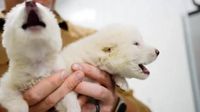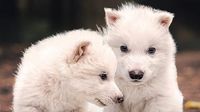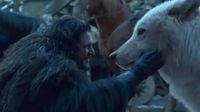In a groundbreaking achievement for biotechnology, Colossal Biosciences has successfully revived the dire wolf, a species that has been extinct for over 12,500 years. This remarkable feat was announced on April 7, 2025, marking the first instance of a "de-extinct" animal returning to life, a process that has captivated both the scientific community and the public alike.
The two six-month-old puppies, named Romulus and Remus, were created through advanced genetic modifications derived from DNA extracted from fossils that date back between 11,500 and 72,000 years. The company utilized fragments from a 13,000-year-old tooth and a 72,000-year-old skull to recreate the characteristics of these ancient creatures.
Colossal Biosciences edited 20 genes of gray wolves to match the genetic profile of the dire wolves, a process the company describes as the first successful "de-extinction." In addition to Romulus and Remus, a female puppy named Khaleesi was also born, honoring the character from the popular HBO series "Game of Thrones," where dire wolves are prominently featured as the symbols of House Stark.
George R.R. Martin, the author of the novels that inspired the series and a cultural advisor to Colossal, emphasized the ecological importance of these animals. He remarked, "Many people see these wolves as mythical creatures that only exist in a fantasy world, but they have a rich history of contribution to the American ecosystem." This perspective highlights the dire wolf's significance beyond pop culture, rooting it in real historical biodiversity.
The announcement of the revival was accompanied by a video shared on social media, showcasing the puppies howling for the first time in over 10,000 years. The video quickly went viral, capturing the imagination of viewers worldwide. Romulus, Remus, and Khaleesi are currently being cared for in a certified ecological reserve overseen by the American Humane Society, which ensures their well-being through live monitoring and professional care.
Dire wolves roamed the American continent during the Pleistocene era, existing between 3.5 and 2.5 million years ago, before going extinct at the end of the last glaciation approximately 13,000 years ago. These formidable predators were significantly larger than modern gray wolves, with estimates suggesting they were up to 25% bigger, characterized by their thick fur and powerful jaws.
Colossal's achievement comes on the heels of other ambitious projects, including the recent announcement of genetically modified mice with traits reminiscent of the long-extinct woolly mammoth. The company's overarching goal is to "de-extinct" various species, including the mammoth and the Tasmanian tiger, leveraging modern genetic techniques and the reproductive capabilities of living animals.
While the revival of the dire wolf has been met with enthusiasm, it also raises questions about the ethical implications and ecological ramifications of bringing extinct species back to life. Critics argue that such efforts could divert attention and resources away from current conservation challenges facing endangered species. Others express concern about the potential impact on existing ecosystems, should these revived species be reintroduced into their historical habitats.
Despite the debates, the successful birth of Romulus, Remus, and Khaleesi represents a significant milestone in genetic science and conservation efforts. The excitement surrounding these puppies is not just about their connection to a beloved fictional universe, but also about the broader implications for biodiversity and the future of species conservation.
As the scientific community continues to explore the possibilities of de-extinction, the story of the dire wolf serves as a fascinating case study of what is achievable through modern technology and genetic engineering. The potential to resurrect lost species opens new avenues for understanding our planet's historical ecosystems and the complex interdependencies that have shaped life on Earth.
In summary, Colossal Biosciences has ushered in a new era of biotechnological advancement with the revival of the dire wolf, a creature steeped in both history and myth. As these puppies grow and thrive, they not only symbolize a leap forward in scientific capability but also spark a global conversation about the future of conservation and our responsibility towards the planet's biodiversity.






